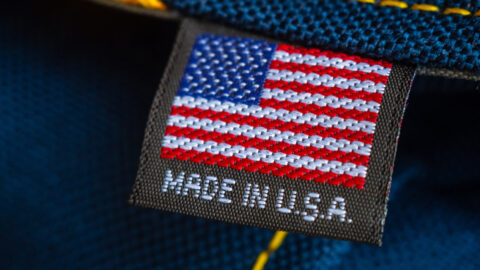This has been a volatile year for retailers and consumers alike, and the uncertain nature of 2022 has been shaping trends across the industry, according to Forrester’s Vast, Fast, And Relentless: Consumer Buying Enters A New Era report. Retailers need to readjust their strategies business-wide as they prepare to meet empowered customers who have more choices than ever in a tough economy that’s giving them more reasons than ever to seek out the best price — wherever it may be.
The result? Traditional omnichannel models don’t have the same potential they used to, meaning retailers need to evolve their operations when determining their inventory, encouraging customer loyalty and exploring available revenue streams. Some major factors that can shape their strategies include:
- Marketplaces setting the pace on price: Fading brand loyalty means many shoppers are more concerned with finding the biggest selection and best deals, which are areas where marketplaces dominate — so retailers should be emphasizing their unique goods to drive conversions and maintain price points;
- Retention is taking priority over acquisition: Retailers are shifting their focus from bringing in new customers to holding onto the ones they have. While offerings like loyalty programs can help, merchants need to provide a value proposition that keeps shoppers coming back if they want to truly succeed; and
- Brands are seeking new revenue models: The pressures of fickle customers and rising inflation mean retailers need alternative options to maintain their profits, and while retail media networks are a first step, creative retailers can find even more innovative ways to put their assets to work.
Marketplaces Forcing Retailers to Get Unique
Cost remains shoppers’ top concern when buying online, which is no surprise given recent high inflation. More than three-quarters (77%) of shoppers cited free shipping as the most influential factor in determining which retailer they buy from, while another 49% chose price. This combination has only enhanced the popularity of major marketplaces, which can use their scale to win over customers by offering both the lowest prices and the most favorable delivery options.
Given current economic trends, marketplaces’ seller-agnostic business model represents another strength. Marketplace sellers can purchase inventory for their warehouses and hold onto to it for years if necessary. This gives them a notable pricing advantage compared to retailers that need to move product on a regular basis, particularly for what Sucharita Kodali, VP and Principal Analyst at Forrester, referred to as “over-commoditized” items that have been made widely available on multiple platforms.
“Consider the inflationary environment,” said Kodali in an interview with Retail TouchPoints. “If you happened to buy something a year ago, this same item is now more expensive, and if you happen to have stored it in a fulfillment center somewhere you have the ability to price arbitrage. That’s basically what’s happening and that is a huge part of how marketplaces lead on price. Consumers know that marketplaces lead on price, and they choose to purchase on these marketplaces, particularly where they can get broadly available commoditized merchandise.”
Retailers without their own marketplaces who can’t compete as effectively on price need to emphasize items they have that can’t be found elsewhere. Forrester’s study found that 54% of brand decision-makers try to prevent at least some of their key products from showing up on online marketplaces, which is particularly important for companies that offer DTC but otherwise rely on selling through other retailers.
“If you have unique distribution of a particular product, like lululemon, you’re going to have much, much more leverage over what you charge, and you’re not going to have to go to the lowest common denominator,” said Kodali. “If you’re Levi’s or another company that’s more broadly distributed, you’re not going to have very much leverage and people aren’t going to buy where the product is more expensive. Having limited distribution and being very careful about what products are distributed is a huge part of being able to have a little bit more control over your pricing.”
Promote Retention by Offering Something No One Else Can
Having a differentiated product offering also is key to earning a high customer retention rate. Retailers with a large selection of products that can’t be found anywhere else have an automatic lead over those selling items that can easily be purchased from larger marketplaces.
“Leading on price is often the only way that they can win if they don’t have a differentiated product or some kind of an exclusive relationship to distribute the products that they do offer,” said Kodali. “This is why, often, some of the more vertically integrated companies do tend to do a little bit better than some of those multi-category, multi-brand companies that often sell very low ticket items.”
While loyalty programs can help to some extent, they come with their own downsides. “Loyalty programs can often help to keep a consumer loyal, but they often tend to be margin eroding because the only thing that they are doing is usually providing some type of a discount or rebate in exchange for more sales,” said Kodali.
One possible option for improving retention without cutting into profit margins is finding new ways to promote sustainability, such as by reducing carbon impact during the last mile. Forrester found that more than half of adults in the U.S., UK and France indicated that it’s important for retailers to offer environmentally friendly delivery options on their websites, and 48% of adults say they regularly purchase from brands that align with their values.
Retail Media Networks’ Potential is Just Starting to be Realized
Forrester expects retail media networks to see significant growth in 2022 as retailers utilize the attention they get from customers as an alternative revenue stream, but this practice is still in its infancy. Networks like those launched by Petco and Ulta Beauty focus on the brands’ apps and ecommerce presence, but retailers need to hold customers’ attention across the full omnichannel space.
“For now, retail media networks are primarily monetizing the eyeball traffic,” said Kodali. “I do think there’s an opportunity to monetize foot traffic, but that’s not become hugely mainstream yet. You’ll occasionally see things like Walmart putting ads on the registers at a store, but that’s not the scale I would envision. I think there’s a lot more you could do outside a physical store on the walls. Literally any flat surface could potentially be a new form of media that takes advantage of foot traffic, but we’re far, far away from that.”
However, even if media networks become more widespread, retailers shouldn’t stop with them. Every unused part of a location’s real estate, both inside and outside, has the ability to become an extra source of cash flow if you can figure out the correct way to monetize its potential.
“I encourage companies to take stock of all of their assets,” said Kodali. “Maybe their asset is in their parking lot — it could be putting new businesses there. Maybe it’s in leveraging your rooftops for solar panels and selling some of that energy back to the local city. I encourage companies to think about any kind of an alternative business, no matter what it could be.”















